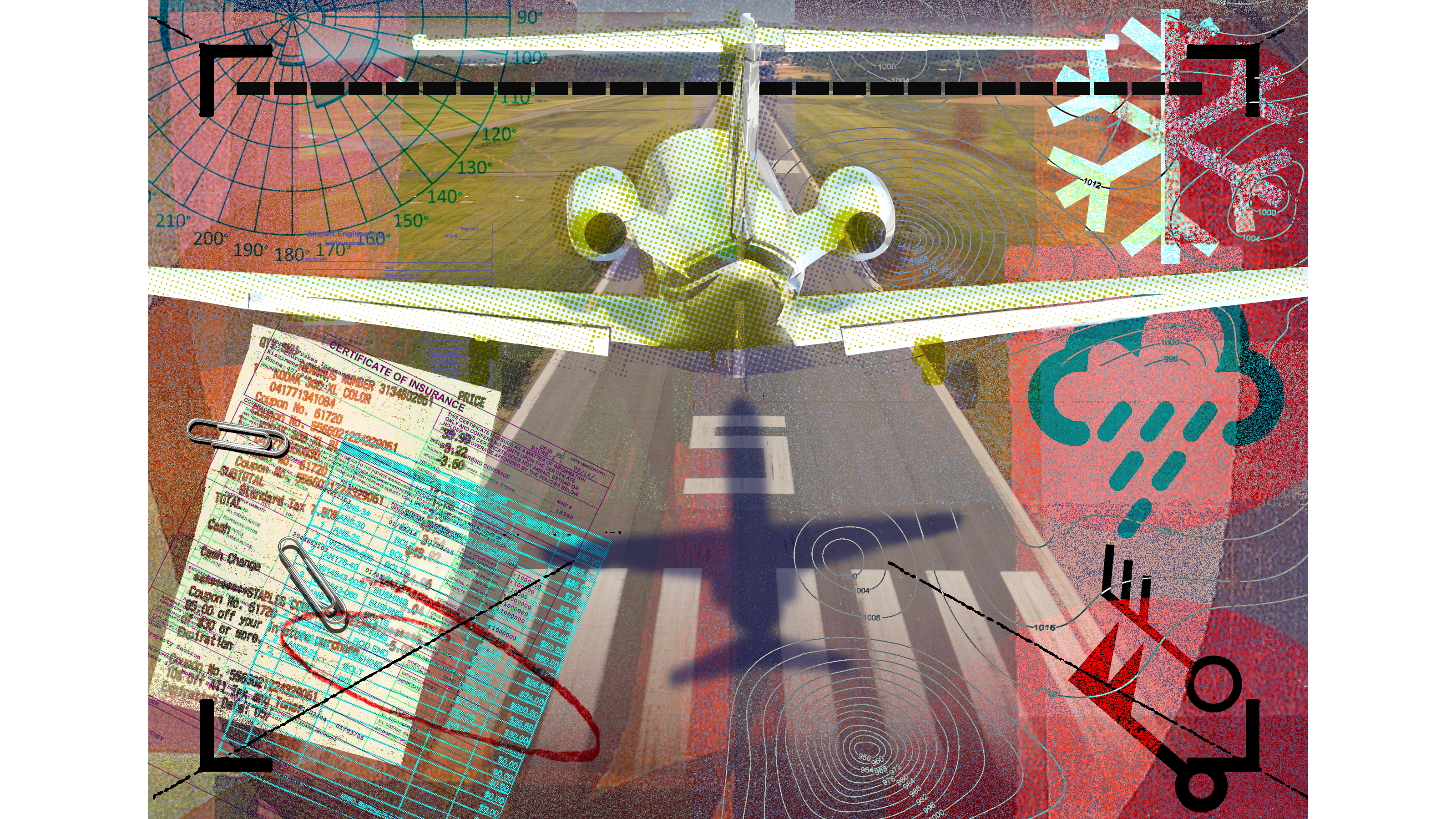Out of bounds
Avoiding runway excursions and overruns
By: Robert Geske
The difference between “we’ll be off at the end” and “we are off the end” is subtle, but their connotations are vastly different. Runway overruns, grouped with excursions, are all too familiar and one of the more easily preventable accidents.

While overruns and excursions are generally nonfatal, the damage caused can scrap hulls and raise insurance premiums across the turbine fleet. From lighting, landing gear, wing tips, skin panels, and required inspections, the cost quickly balloons for any operator. The importance of proper technique and a stabilized approach along with runway selection all play a key role in preventing an excursion.
Focusing on runway excursions during landing, the more prolific compared to takeoff, there were 44 accidents from 2008 through 2023, around three a year. Proportional to all turbine accidents, landing excursions account for 13 percent, so reducing them provides savings on insurance claims.
A review of the data and risk exposure may shed light on what the community should do to reduce the frequency of occurrence. The majority of accidents occur during the day (33) followed by low light and night conditions (10). One accident did not clarify lighting conditions. Visual meteorological conditions (VMC) had 29 accidents and instrument meteorological conditions (IMC) had 14; again, one accident did not specify.
Separating aircraft by engine type has turbofans with 28 accidents, followed by turboprop (14) and turbojet (2). FAR Part 91 led (33), followed by parts 135 (8), 137 (1), and 91K (1). In terms of injury, 30 accidents reported no injuries, eight had minor injuries, and six had serious injuries.
Runway conditions, a contributing factor in excursions, were split between 55 percent contamination and 45 percent with none, or dry. Of those 55 percent (24 accidents) with contamination the majority were wet surfaces (14), followed by ice covered (5), snow (3), standing water (1), and slush (1). Runway excursions on dry surfaces accounted for 19 accidents.
From an operations perspective, pilots should strive to eliminate the dry runway excursions for the easiest safety gains. Only one case was attributed to a mechanical failure of the primary braking system. The rest of these excursions were the pilots’ decisions or lack thereof. Consistent themes emerged among the cases: unstabilized approach, cross- and/or tailwind, and delayed reactions. Some crews failed to recognize, or even obtain, the wind direction. However, unstabilized approaches were the leading theme in dry runway excursions. One case involved a captain who, in direct opposition to standard operating procedures, ignored the repeated calls of the pilot monitoring to go around on their unstabilized approach. While the FAA has been on a stabilized approach crusade for almost two decades, it seems some pilots are still not heeding that advice. We have improved since then, but unstabilized approaches go beyond excursions and are noted as a contributing factor in other accidents. Now is not the time to let up on this subject.
From dry to wet, conditions matter, and contamination plays a large role in excursions. A review of the more hazardous contaminant, ice, saw two cases where airport staff lacked knowledge regarding the issuance of notams and understanding runway conditions. The remaining three accidents were related to poor braking due to ice. One Falcon 20 had its drag chute fail to deploy correctly along with the poor braking action. Of the crews who decided to land on snow-covered runways, unstabilized approaches and insufficient runway length were the themes. The crew who landed on a runway with standing water and the crew who landed on a slush covered runway both made poor decisions. Lastly, and most prolific, wet runways saw several differing factors.
Wet runways increase the required stopping distance while reducing braking action, compounding other errors such as landing with tailwinds . Turbine pilots have added systems that can aid in deceleration such as spoilers, speed brakes, lift dumps, beta, thrust reverse, and drag chutes, but landing and stopping distance are normally calculated for a given configuration. Proper configuration according to the flight manual is key to assure the runway available is suitable for landing. Often our overreliance on systems creates opportunity for misuse when we find they work great in dry conditions but lack the necessary deceleration effect on wet surfaces.
How best to avoid an excursion starts with the runway selection. Avoid the tailwind, which can shift the touchdown point farther down the runway. Establish and maintain a stabilized approach. If the approach is not stable, then go around early. Trying to salvage a bad approach puts more focus on the immediate and less on the future needs, leading to poor flaring, bouncing, and floating, all of which use up the remaining runway. Commit to proper configuration and proper application of stopping systems. These are aircraft specific, but the order of operations is critical. In one prominent accident, the flight crew’s failure to follow the procedure led to an overrun. It’s important for pilots to know how these systems operate and what conditions the aircraft needs to have for them to work properly. If the aircraft bounces and the weight on wheel switch opens or turns off then the deployment of certain systems may not occur and throw an annunciator/misconfig light (e.g., thrust reverse). This can add confusion and distract crews during a critical phase. If nothing else, once committed to a landing stick to it. Fatalities tend to occur when pilots decide to attempt a late go-around to avoid an overrun and fail to obtain sufficient speed to become airborne or stalls shortly after liftoff. As I tell my students, better to go through the fence at 20 knots then the trees at 90.
Robert Geske is the manager of aviation safety analysis for the AOPA Air Safety Institute. [email protected]


